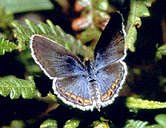
Insect Wings - Wonders of Creation
What aeroplane in flight could stop dead, hover, loop the loop and somersault in its own length, then land and stick to the ceiling of an aircraft hanger? Insects such as the humble housefly can perform any one of these acrobatic feats - and complete the movement within a second! Insect flight has only recently become the subject of serious scientific investigation, and it is already clear that each of these tiny creatures is a marvel of engineering design.

Even the molecular structure of the membrane itself may vary throughout the wing. Also, there are lines of flexion, shock absorbers, counterweights to stop the insect tipping, and ripstop mechanisms to minimise damage. The wing will even collapse on collision to prevent its breakage, then quickly respread again after impact. The insect flies by combined flap and twist effects. More sophisticated added mechanisms include changing the wing camber (the wing curvature that generates lift), varying the wing area by either overlapping or partly folding up the wing, reversing the camber by variation of body twist and wing stroke angle, and `clap and peel' motions which bring the wings together above and diverge the leading edges to generate yet more lift.
Dr. Wootton, after studying the wings of the slow-flying, hovering flies and dragonflies, exclaims that `their wings have proved to be small masterpieces of ingenious design'. He concludes by saying:
-
`The better we understand the functioning of insect
wings, the more subtle and beautiful their designs appear. Earlier comparison
with sails now seem quite inadequate. The wings emerge as a family
of flexible airfoils that are in a sense intermediate between structures
and mechanisms, as these terms are understood by engineers. Structures are
traditionally designed to deform as little as possible; mechanisms are designed
to move component parts in predictable ways. Insect wings combine
both in one, using components with a wide range of elastic properties, elegantly
assembled to allow appropriate deformations in response to appropriate
forces and to make the best possible use of the air. They have few
if any technological parallels - yet.'
David J. Tyler (1991)
Karner Blue Butterfly image credit: US Fish & Wildlife Service/John & Karen Hollingsworth

